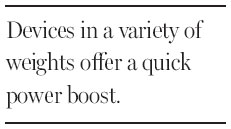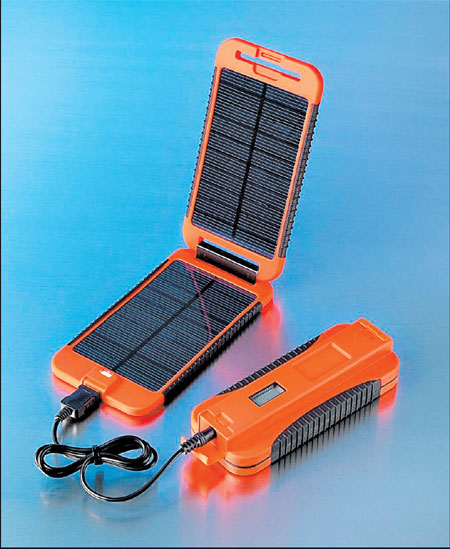Mobile power chargers fill in when sockets aren't nearby
Updated: 2013-01-20 07:59
By Kate Murphy(The New York Times)
|
|||||||
|
Options for providing a charge for smart-phones and tablets when an electrical source is unavailable are growing. The Power-monkey Extreme has a solar panel for recharging off the grid. |

You may know people so smitten with their smartphones and tablets that they feel a kind of angst when their devices' batteries are getting low. Think tremors and rending of garments.
If you happen to be one of those people, you might consider buying a backup battery for recharging on the go. The market for these mobile power sources has grown exponentially in the last two years, with more compact and more powerful options available that allow you to recharge hundreds of times. Which is best depends on how much power you want and how much weight you are willing to carry.
"Mobile chargers are becoming one of our most popular categories," said Victor Setton, the chief executive of Mobile City in Manhattan, who bought one himself after he missed critical moments of extended play at the United States Open because he left the match to recharge his phone. "Everybody has had moments like that when you are watching your phone power down and it's killing you."
First, determine how much standby power you need. Battery capacity is measured in milliampere hours (mAh). The more milliampere hours a battery has, the longer it will run. Most smartphone batteries have a capacity of 1,500 to 2,100 mAh, while tablet batteries are in the 6,000 to 11,000 mAh range. To fully recharge these devices, you need an auxiliary source that meets or exceeds that capacity.
For a quick charge to give you a couple of hours until you can get to a wall socket, go with something small, inexpensive and lightweight like the 1,800 mAh Triple C Power Mate Plus ($29), which plugs directly into an
iPhone 3GS, 4 or 4S; the company, Triple C Designs, is working on a version for the iPhone 5. The device is the size of a makeup compact, weighs 34 grams and comes in various designs.
The 2,200 mAh MiPow Power Tube ($39) is compatible with a wider range of mobile devices and will completely charge a smartphone. Encased in what looks like brushed aluminum, it weighs 71 grams and is the size of a cigarette lighter. There are larger-capacity Power Tubes up to the 5,500 mAh version ($99), which weighs 136 grams and can charge a smartphone twice or charge a tablet 50 percent.
For more charging capacity, take the HyperJuice Mini ($100), which is about as big as a smartphone but thicker, weighing 238 grams and delivering 7,200 mAh. It also has the advantage of multiple charging ports so that two mobile devices can be charged at the same time, as long as they are USB compatible.
HyperJuice offers battery chargers with progressively larger capacities up to 61,000 mAh ($450). That charger is about the size of a paperback book and weighs about two kilograms. It is compatible only with Apple products but has enough power to keep a MacBook going 32 hours, extend iPad battery life an additional 89 hours or fully recharge an iPhone up to 52 times.
For those who prefer not to keep track of another device, there are charging sleeves that snap onto the devices they already have. Mophie is the leading provider of iPhone charging cases with its popular Juice Pack Air ($80). It has a 1,500 mAh capacity and adds 71 grams to the weight of an iPhone 4 or 4S. An iPhone 5 version is expected early this year.
For Android users, there is PowerSkin, with 1,500 mAh charging cases for a variety of smartphones. They cost $40 to $80, with discontinued models selling for as little as $5.
If you want an iPad charging case, there is the KudoCase ($130), which relies partly on solar power. It converts outdoor and indoor light into energy for a continual trickle charge. Six hours of sunlight offer only about an hour of iPad time, so you will still need to recharge the case occasionally by plugging it into an outlet.
The Powermonkey Extreme ($200), also has a solar component, with a separate solar panel for recharging off the grid. The 9,000 mAh Powermonkey weighs 241 grams without the solar panel. It is compatible with most mobile devices, shock-resistant and waterproof up to 30 minutes.
Finally, there are also mobile chargers that come in bags with pockets to contain cords and devices, so you do not have to spread everything out on a table. The Timbuk2 Power Commute ($199) has faux fur-lined pockets, as well as the included 3,600 mAh charger. There are also little openings between pockets through which the charger cables can be threaded, and a nifty organizer pocket for partitioning pens, change, business cards and other small stuff.
The New York Times
(China Daily 01/20/2013 page11)
